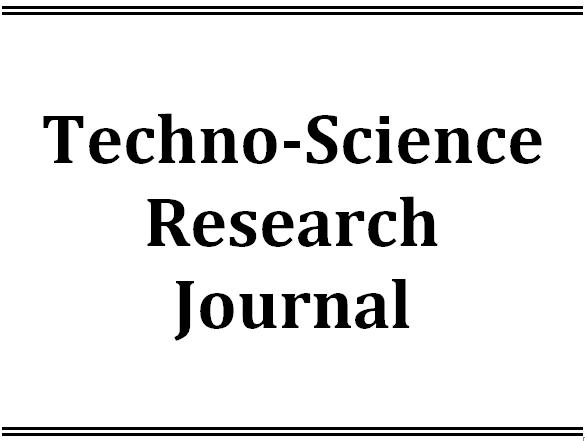Latest Issue
Empowering Education with Online Khmer Handwritten Text Recognition for Teaching and Learning Assistance
Published: August 30,2025Undergraduate Student Dropout Prediction with Class Balancing Techniques
Published: August 30,2025Status of Seawater Quality at Koh Rong Island, Sihanoukville, Cambodia
Published: August 30,2025Low-Complexity Detection of Primary Synchronization Signal for 5G New Radio Terrestrial Cellular System
Published: August 30,2025Word Spotting on Khmer Printed Documents
Published: August 30,2025Tuning Hyperparameters Learning Rate and Gamma in Gym Environment Inverted Pendulum
Published: August 30,2025Examining Passenger Loyalty in Phnom Penh Public Bus System: A Structural Equation Modelling Approach
Published: August 30,2025Prediction on Load model for future load profile of Electric Vehicle charging demand in Phnom Penh
Published: August 30,2025Economic Study on Integrating PV-DG with Grid-Tie: Case Study in Cambodia
Published: August 30,2025Assessment of Rainfall Change in Kampong Thom Province: Implication on Agriculture and Infrastructure
-
1. ITC
Academic Editor:
Received: January 21,2024 / Revised: / Accepted: January 21,2024 / Available online: June 01,2018
As a consequence of the global warming effects on rainfall changes such as droughts, hail storm or flash flood, data sets of highest daily rainfall for the period (1981-2010) were used for calculating the statistical distribution of extreme monthly rainfall in tributary of Tonle Sap Basin (Stung Chinit Catchment, Kampong Thom Province). The main objective of this paper is to develop the return period of rainfall and estimate depth of rainfall from 2010 to 2040 by following the scenario A2 and evaluating the frequency of rainfall maximum intensity. The frequency analyses and most statistical test had been done by using HYFRAN Model. Three distributions were used in this research namely Lognormal, 3-parameter lognormal and Gumbel. Estimation of theoretical distribution was achieved by using maximum likelihood method and adequacy test was carried out through chi-square test. The result shows that annual rainfall intensity does not extremely change from 2010 to 2040. However, it just only changes in duration of rainfall. In the past, the peak of rainfall was in September and October, but in the future, the peak of rainfall will be in June and July and the maximum rainfall intensity is 155 mm for a return period of 100 year. The changing to time and intensity rainfall will affect to agriculture and infrastructure can be trigger a chain of negative leading to loss livelihood. Finally, the study suggests measures for enhancing community’s capacity for adaptation to current climate variability and future climate change.

